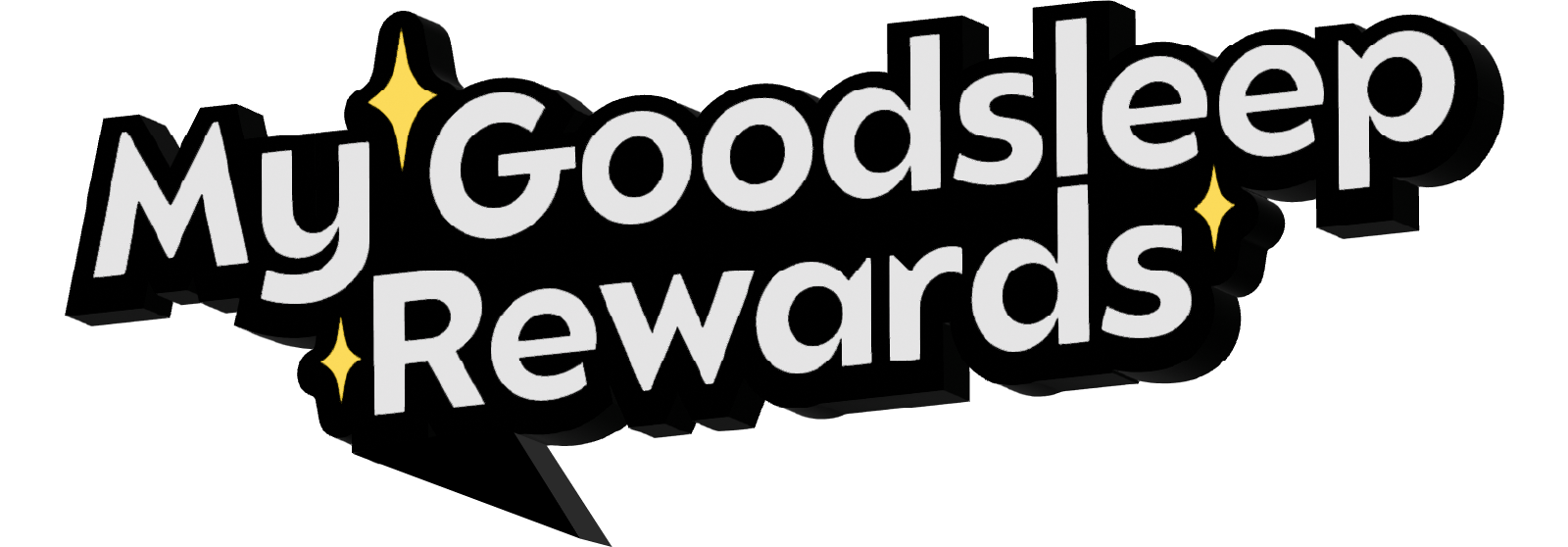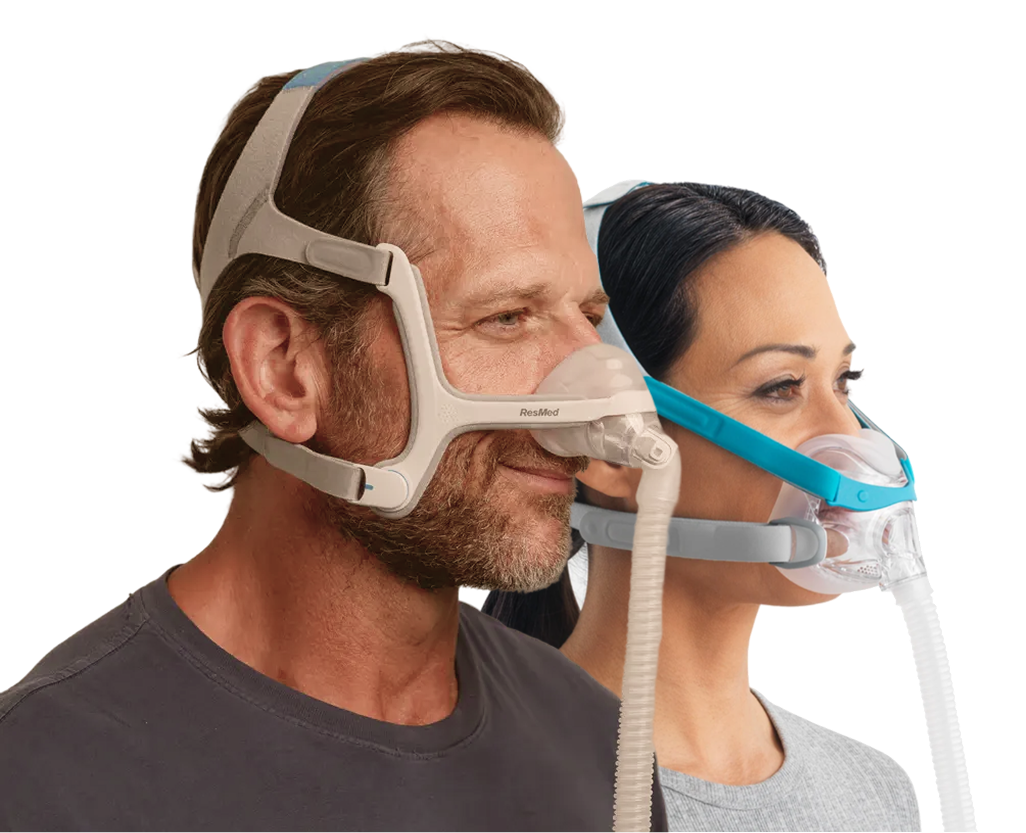What Is a CPAP Machine?
A PAP (Positive airway pressure) machine provides a steady flow of pressurised air through a face mask during sleep, helping to keep the upper airway open. For individuals with obstructive sleep apnoea (OSA), this can ease breathing, minimise snoring, and reduce interruptions to sleep.
To use a PAP device, you need to wear a mask over your nose and/or mouth. The mask attaches to a small machine via a hose, which delivers air through the hose and mask into your upper airway as you sleep.
In certain cases, PAP machines may also be used to treat central sleep apnoea (CSA), a condition far less common than OSA. CSA is when your brain stops telling your breathing muscles to breathe, which makes them stop as well.
Not all PAP devices are the same. Instead, there are various types of PAP machines, each providing different air pressure modes.
3 Types of CPAP Machines
Although 'CPAP' is sometimes used for all types of PAP machines, there are in fact several different types.

Continuous Positive Airway Pressure (CPAP)
CPAP machines are usually the first treatment for sleep apnoea where the airway becomes blocked while the person is asleep.
CPAP machines deliver a steady stream of air pressure to your airways while you sleep. This airflow stops the tissues in your airways from collapsing while you sleep, so you can breathe easily and it also stops you from snoring. Some CPAP machines have a pressure relief setting that slightly reduces pressure during exhalation.
The most common type of PAP device is called a CPAP machine. They are usually the cheapest and most widely available. But models with more components can cost more.
Travel CPAP machines are like regular CPAP machines, but they are more portable. These devices are usually small and lightweight. Some models are also approved by the FAA and can be used in flight, but the rules may be different for each airline.
Auto-Adjusting Positive Airway Pressure (APAP)
APAP machine adjusts the air pressure based on your breathing. You can add auto-adjusting technology to CPAP machines, which is why they are sometimes called auto-CPAP machines.
With an APAP device, the pressure level is calculated by the device itself, not decided during a sleep study. You can also change the pressure level using the device itself. This is why APAP therapy is different from fixed-level CPAP.
When you get an APAP machine, the doctor will likely have set an upper and lower limit of air pressure, but the device automatically adjusts the air pressure within those limits.
For example, if you move around a lot in your sleep, you might find it harder to breathe if you're lying on your front. An APAP machine senses changes in your breathing and automatically adjusts the air pressure up or down as needed.
Bilevel Positive Airway Pressure (BiPAP)
Bilevel positive airway pressure (BiPAP) is one of the most popular types of PAP therapy devices. A CPAP machine provides a steady flow of air all night. A BiPAP machine provides two different air pressures: one for breathing in and another, lower pressure, for breathing out.
A BiPAP machine can sense when you breathe in and out, and it is usually more comfortable to use than a CPAP machine. If you have breathing problems when you sleep, your doctor will often suggest that you try BiPAP therapy. This is a more advanced type of PAP machine, so it costs more.
Doctors usually only give BiPAP treatment to people with OSA if CPAP therapy doesn't work. BiPAP machines use two different pressure settings. To find the right pressure levels for your device, you might need to do an overnight titration study.
| Features | Benefits | Cost | |
| CPAP | Delivers a constant level of air pressure to keep your airway open while you sleep. | Effective for people with OSAand usually the cheapest PAP option. | Around $600–$1,000. More advanced models can cost more. |
| APAP | More advanced than CPAP. Adjusts air pressure automatically based on your breathing patterns during sleep. | More comfortable for people whose needs change through the night. | About $800–$1,800. Usually pricier than CPAP because it detects and adapts to your breathing. |
| Travel CPAP | Works like a regular CPAP but smaller and portable for travel. | Lets you continue therapy while away from home. | $450–$1,200 |
| BiPAP | Provides different pressures for inhaling and exhaling, with higher pressure as you breathe in. | Can be more comfortable at higher pressures; often used for more severe breathing problems. | $1,700–$3,000. The most expensive PAP type. |
>>>> Does a CPAP machine do when you stop breathing?
Which Type of Machine is Right For You?
+ CPAP Machines are often the first treatment for people with OSA who don't have any other breathing problems. The pressure level for the CPAP device is usually decided during a sleep study.
+ APAP Machines are useful for people who have trouble sleeping with the constant pressure of a CPAP machine. They can also help sleepers who have breathing problems, like those who get allergies or who keep changing positions while asleep.
+ BiPAP Machines provide a more specialised form of PAP therapy. Doctors usually only give BiPAP treatment to people with OSA if CPAP therapy doesn't work. BiPAP is also good for people who have other sleep breathing problems, like central sleep apnoea.
+ Travel CPAP Machine are a good option for people with OSA who sometimes sleep away from home. Travel CPAP devices are small, lightweight, and easy to pack. You might be able to take a regular CPAP machine on your travels, but they are often big and hard to carry.
>>>> Top CPAP Machines for Sleep Apnea in 2025
FAQs
Will I Need a Prescription for a CPAP Machine?
In Australia, you can buy CPAP therapy equipment without a prescription from a doctor, but it's a good idea to get one before you buy. If it's your first CPAP machine, please give us as many details as you can.
Is CPAP covered by Medicare Australia?
Medicare will cover 80% of the approved amount for 13 months of rent for a CPAP machine. Once you meet your Medicare Part B deductible, you'll pay the remaining 20%.
How can I make my CPAP more comfortable?
Exercises to help you relax, like progressive muscle relaxation, can help with the worry about using CPAP. If you're still feeling claustrophobic, talk to your healthcare professional or CPAP supplier.






